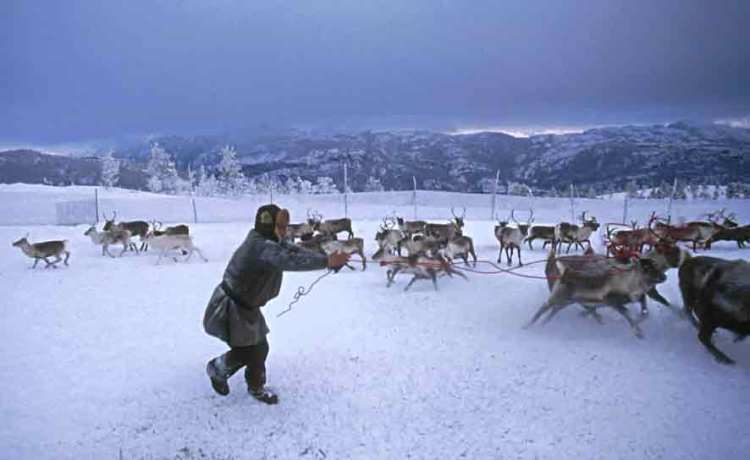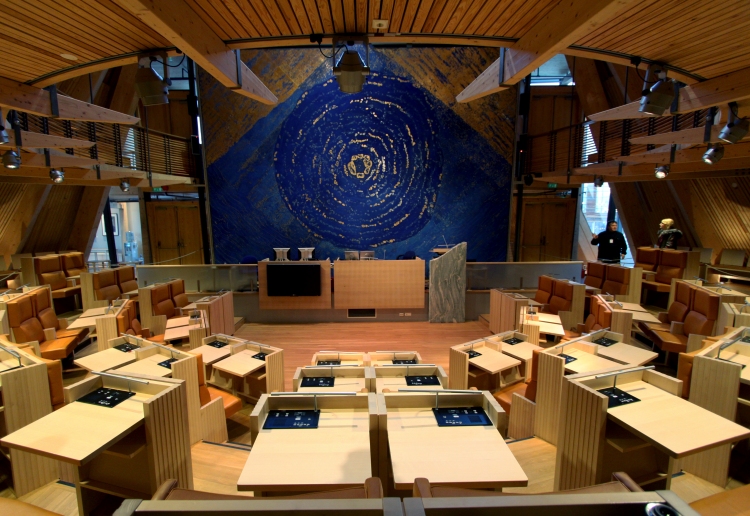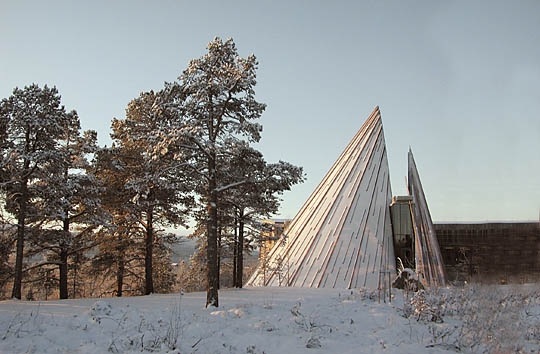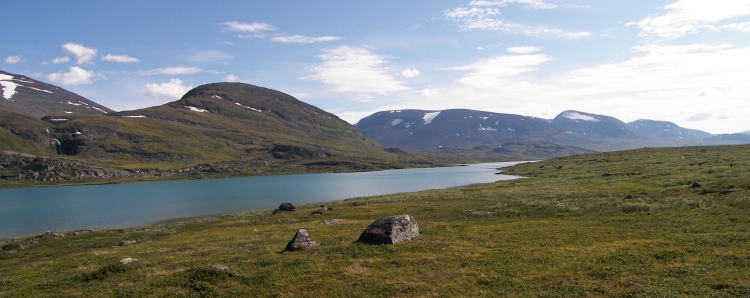The Sami Parliaments of Norway, Sweden & Finland offer an inspiring story and a potential solution to the challenges of improving indigenous to non-indigenous relations and giving indigenous peoples a voice within contemporary political structures.
This article contains links to information that is written in Norwegian & Swedish. It is recommended that these pages are viewed using the translation functions in Google Chrome.
The Sami people– whose livelihoods are traditionally based on reindeer herding and fishing, are the original inhabitants of northern Norway, Sweden, Finland and parts of Russia. Throughout history, the Sami have faced many challenges as an indigenous minority, but recent decades have seen the establishment of social structures which give the Sami greater cultural recognition and a voice on the issues impacting their communities.
Since its establishment in 1989, the Sami Parliament in Norway has become an arena for political representation, consultation and discussion on matters affecting Sami communities. Although the Sami Parliament does not hold much political power, it is seen as an important forum with symbolic significance and a role in the preservation and promotion of Sami culture, particularly given Norway’s culturally oppressive history of assimilation (i.e.”Norwegianization”) policies.
Norway’s Sami Parliament serves a number of purposes. It is a forum for discussion and debate on issues relating to Sami communities, an advisory body that consults with the Norwegian Government and an administration that develops initiatives and distributes state funds that are aimed at promoting and preserving Sami culture.
Thirty-nine representatives form the plenary of the Norwegian Sami parliament which meets four times per year. These representatives are democratically elected by Norway’s Sami population, enrolled in the Sami Electoral Register. The elections for the Sami Parliament are held held every four years, at the same time as the Norwegian National Parliamentary elections, making it convenient for both voters and the electoral administrators.
The parliamentary plenary isn’t the only body in the Sami Parliament. There are a number of committees that are established for the consideration and reporting of information and for projecting the voices of different demographics. These structures include committees on specific issues and administrative areas, a parliamentary council responsible for internal governance, an elders committee acting as an advisory body to the Sami Parliament and a youth policy committee responsible for representing and engaging Sami youth. The Norwegian Sami Parliament also sends representatives to a cross-border Sami council comprised of representatives from the Swedish and Finnish Sami Parliaments as well as Sami organisations in Russia.
Sami Parliament Formation
In 1978, public protests over a proposal to build a hydro-electric dam in a controversial area in Northern Norway captured the attention of both the public and Norwegian parliament. It drew attention to the issue of Sami rights and a Sami Rights Commission was established in 1980. This commission handed down a key report which proposed that the following article be added to the the Norwegian Constitution:
“It is the responsibility of the authorities of the State to create conditions enabling the Sami people to preserve and develop its language, culture and way of life” (Article 110a).
This article was incorporated into the Norewgian Constitution in 1988 and today forms the legal basis for indigenous recognition as well as the establishment of rights and representation structures. The report from the Sami Rights Commission also led to the creation of the Sami Act and the Sami Parliament Act in 1987, which legislated the formation of the Sami Parliament alongside language rights and general consultation requirements between the Sami Parliament and Norwegian Government.
In 2005, a formal and more detailed Consultation Agreement was made between the Sami Parliament and the Norwegian Government. This details the regularity and setting in which the Sami Parliament and Norwegian Government will meet as well as requirements for informing one another on policy matters and decisions that directly affect Sami communities.
True political power or simply symbolic?
The Norwegian Sami are a small minority, comprising less than 1% of the Norwegian population. As such, the Sami Parliament has little power when it comes to influencing decisions on Norwegian laws and matters that are also of great significance to the wider Norwegian population. This is a reality that results from the Norwegian democratic system, which like many other nations, is based on the principle of majority rule.
However, given that the Sami are such a small minority, it could be argued that the Sami Parliament provides a suitable avenue for meaningful representation and consultation on matters that affect Sami communities. Although the Sami Parliament has no voting or veto powers on national laws and government decisions, they can still have influence on policies that are relevant to their people through the established consultation processes and through the cultural autonomy and self-determination that is provided on Sami directed funds and government initiatives. As such, the Norwegian Sami Parliament is more than symbolic as it plays an important role in the upholding of indigenous rights, the provision of self-determination and the promotion of Sami culture. And with issues of land management, climate change, racism and cultural heritage currently facing Sami communities, the Norwegian Sami Parliament is a political institution of increasing importance.
What about Sweden and Finland?
In comparison to Norway, the Swedish Sami Parliament has significantly less self-determination and political representation. Established in 1993, well after the Norwegian Sami Parliament, the Swedish Sami Parliament was set up as a government agency for administrative purposes and to monitor issues relating to the Sami people of Sweden. This primary purpose as a government agency has state imposed controls and regulations attached, resulting in limited decision making powers and a lack of self-determination.
In contrast, the Finnish Sami Parliament (representing close to 6000 Finnish Sami) has been granted significantly more cultural autonomy. Finland’s constitution officially recognises the Sami as an indigenous peoples and outlines the right of the Sami people to self-govern on culture and language. Although the Finnish Sami Parliament is structurally situated under the Finnish Ministry of Justice, it is not a state authority or part of the public service. As such, it has more autonomy on decisions relating to Sami culture and linguistics than the Swedish Sami Parliament.
Overall, the Sami Parliaments of Scandinavia are an important example of a democratic model that can increase the representation and self-determination of an indigenous people, who for many years have struggled to achieve recognition and representation within contemporary political structures and whom still face many significant challenges.
Most importantly, the Sami Parliaments directly address the challenge of how to give a small minority that has suffered a history of cultural oppression, a voice and effective representation in a Western democratic system, that by nature, favours the interests and representation of the majority. In the cases of Norway and Finland, the Sami Parliaments aim not to determine what is most appropriate for the Sami people, but to allow the Sami people to decide for themselves the policies and projects that will determine their future and to allow their voice to be heard alongside the Norwegian majority.
All three Sami Parliaments are funded by the federal governments of their respective countries.
Published 16/09/2013



